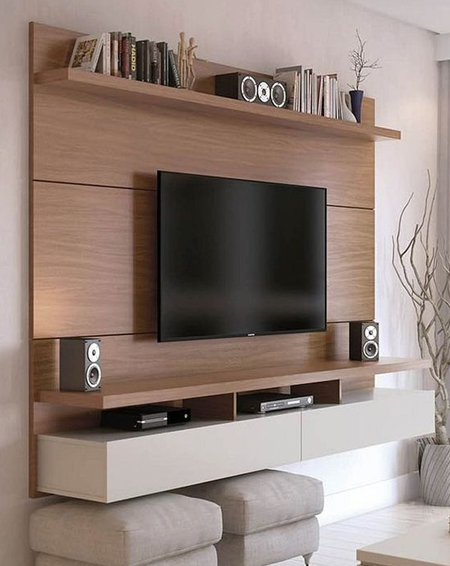The Role Of The TV In The Home Has Changed For Many
HDTV, Smart TVs, Showmax, Netflix and a host of other services has changed how the TV takes pride and precedent in the living room, so where should you put the TV these days?
07/07/2021
pinterest.com/pin/574560864968462533/
Love it or hate it, there is no denying that the humble TV has been transformed into an electronic commodity that everyone has in their home. Whether you have an HDTV, Smart TV, or just a large or small flat screen TV, all the add-ons you can connect to the TV has made it a feature in many living rooms or family rooms.
Where the TV was once confined to a cabinet and out of sight when not in use, today's interior designers and decorators are placing the TV front and centre and making it a feature or focal point. Unless you don't have a TV and let's be honest and say that not everyone does, finding the right spot for the TV will provide entertainment for the whole family.
Front And Centre
In a home where the whole family takes joy in what the TV offers, front and centre of the room is the best place to have a TV. Depending on the size of the TV, you can have it prominently displayed on a wall or media cabinet and let it shine on its own, or you can decorate around the TV to make it less of a feature and more about what's going on around it.
pinterest.com/pin/574560864962547055/
Placing a TV in a wall unit gives you the freedom to decorate around the TV without damaging walls. A decorative shelf unit designed to accommodate a TV as well as the accompanying audio and visual accessories lets you select a decorating scheme that is not just about the TV. The only consideration to keep in mind when placing a TV inside a decorative shelf unit or on top of a media console or cabinet is to make sure it is high enough away from children's fingers.
pinterest.com/pin/574560864958226889/
If you don't mount the TV on a wall using a mounting bracket, you don't have as many options for directing the TV in a particular direction, but you can still turn it sideways a little if you want to be able to view from another area in an open plan space. I like to watch some of my favourite shows whilst working in the kitchen and giving the TV a slight angle allows me the opportunity to do just that.
If you want the TV to be front and centre and not be disguised, leave the wall around the TV blank.
pinterest.com/pin/514325219947687187/
Many homeowners want the focus to be solely on the TV and for the TV to be front and centre without any distractions. There is nothing to stop you from doing this and design guidelines no longer err towards keeping the TV out of sight. The opposite is now true with all the latest advances in TV technology and what you can watch on the TV. Perhaps the kids link up their PlayStation or video games, hubby will want to watch weekend sport and you, well there are plenty of other programmes available these days.
pinterest.com/pin/203999058112251845/
The focal point in the living room, this TV has an entire wall to itself. LED lighting behind a floating panel mounted onto the wall allows for discreet lighting of the room without distraction and is also a great way to hide cables and wires.
Mounting a TV onto a floating panel to provide a backdrop or one that incorporates shelves is an easy way of mounting the TV in place without having to drill into walls. Design the panel to allow for cables to the TV and possibly speaker wires as well depending on the surround sound setup.
pinterest.com/pin/422281205968020/
Mounting the TV onto a wall does provide a safer alternative to having it freestanding on a cabinet, but investing in a slim media console or cabinet will also free up floor space especially with the slimline design of flat screen TVs.
david tsay
For those who don't want the TV to have all the attention, adding wall shelves on either side immediately catches the eye and focuses it on the wall as a whole and not just on the TV.
It is so easy to downplay the placing of a TV by painting the wall behind in a dark paint colour.
Not In Plain Sight
Where a TV is only used to watch certain programmes and isn't an essential electronic device, you probably won't want it to stand out in the room. There are plenty of ways to let the TV fade into the background, whether it is painting the wall behind the TV in a dark colour to setting up a wall gallery around the TV.
james nathan schroder
If the TV is not a feature in the room, there are plenty of ways to make it less obvious and not as much a focal point.
helen norman









